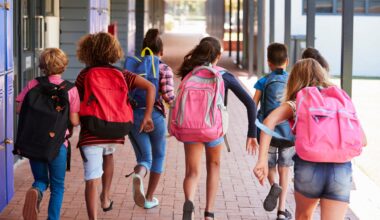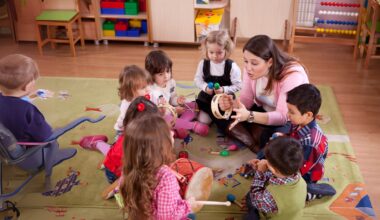Creating a classroom where students feel confident, capable, and ready to learn doesn’t happen by chance. It takes intentional strategies that go beyond academics—strategies rooted in Social Emotional Learning (SEL). SEL helps students develop the self-awareness, relationship skills, and emotional resilience needed to thrive in and outside of school.
One of the most transformative outcomes of SEL is the boost it gives to student self-confidence. When students believe in themselves, they’re more likely to take risks, engage in class, and persevere through challenges. In this blog, we’ll explore five practical ways to build self-confidence through SEL—helping your students reach their full potential in a supportive, empowering environment.
1. Build Strong Teacher-Student Relationships
Positive teacher-student relationships are the foundation of a confident classroom. When students feel seen and supported by their teacher, they’re more likely to believe in themselves. Building this connection helps students feel safe to express themselves, ask questions, and take risks without fear of judgment.
Here are a few ways to establish strong rapport:
- Get to know your students as individuals—learn about their interests, families, and cultures.
- Practice active listening. When students share their thoughts or feelings, listen attentively and respond with empathy.
- Keep communication open. Create a space where students feel comfortable speaking up and sharing ideas.
- Offer personalized support. Recognize that every student learns differently and adjust your teaching to meet them where they are.
- Use positive reinforcement. Acknowledge their achievements—big or small—to help build self-worth.
These efforts build trust and send a clear message: “You matter. I believe in you.”
2. Promote Peer Support Systems
Peer relationships are just as powerful as teacher connections when it comes to confidence-building. By encouraging students to support each other, you promote both academic and emotional growth. SEL thrives in environments where students work together, offer encouragement, and learn empathy through experience.
To foster a strong peer support system:
- Use cooperative learning strategies. Group work builds collaboration skills while giving students a chance to help and learn from each other.
- Create peer mentoring opportunities. Older or more experienced students can guide younger ones, boosting leadership skills and creating a strong sense of community.
- Encourage inclusive dialogue. Set ground rules for respectful discussion so every voice is heard and valued.
- Plan team-building activities. These help students build trust, learn conflict resolution, and strengthen group dynamics.
- Celebrate each other. Encourage students to recognise their classmates’ efforts and successes—it builds a culture of kindness and motivation.
These connections help students feel they belong—and that feeling can fuel their confidence to try new things and face challenges.
3. Encourage a Growth Mindset
A fixed mindset says, “I’m just not good at this.” A growth mindset says, “I can’t do this yet.” That one word—yet—can transform a student’s entire learning experience. Encouraging a growth mindset helps students understand that failure isn’t a dead end—it’s part of learning.
Practical ways to promote a growth mindset:
- Normalize struggle. Talk openly about how learning takes time and effort.
- Praise effort, not just results. Instead of saying “You’re so smart,” say “You worked really hard on this!”
- Model the mindset. Share stories of people (including yourself) who learned from failure and kept going.
- Teach reflection. Have students set goals, track their progress, and reflect on their journey.
- Use real-world examples. Show how successful individuals—athletes, inventors, artists—embraced challenges to grow.
When students see setbacks as opportunities to learn, their confidence grows with every effort they make.
4. Create an Emotionally Safe Learning Environment
A confident student is one who feels emotionally safe—free to speak up, make mistakes, and be themselves. Social Emotional Learning helps educators create this type of classroom culture, where kindness, respect, and emotional awareness are the norm.
Strategies to build emotional safety include:
- Establish classroom norms together that reflect respect and inclusivity.
- Validate student emotions. Let them know it’s okay to feel nervous, frustrated, or unsure.
- Introduce emotional check-ins. Use simple tools like emojis or color charts to help students express how they feel at the start of the day.
- Model emotional regulation. Show students how you handle stress or conflict in healthy ways.
- Use restorative practices to manage conflict and repair relationships.
An emotionally secure environment makes students more likely to engage fully—without fear of embarrassment or rejection.
5. Empower Students with Voice and Choice
When students are given a say in their learning, it boosts their confidence and motivation. Empowerment happens when students feel their opinions matter and their choices influence their educational journey. SEL supports this by developing self-awareness, responsible decision-making, and a sense of agency.
Here’s how to give students more voice and choice:
- Offer flexible learning options. Let students choose how to demonstrate understanding—through presentations, posters, podcasts, or traditional essays.
- Involve them in rule-making. Co-creating classroom expectations gives students a sense of ownership.
- Encourage student-led discussions. Let students lead topics they’re passionate about to build communication and leadership skills.
- Provide opportunities for self-assessment. Give students time to reflect on their work and identify areas of growth.
- Invite feedback regularly. Ask students what’s working for them and what could improve. Then act on it.
When students feel empowered, they’re more likely to take charge of their learning and develop confidence in their abilities.
Why Confidence Matters in SEL
Confidence isn’t just about feeling good. It’s directly linked to academic achievement, motivation, and emotional resilience. Confident students:
- Participate more actively in class
- Ask for help when needed
- Persevere through challenges
- Set and work toward meaningful goals
- Develop stronger relationships with peers and adults
Social Emotional Learning provides the tools to build this confidence—from relationship skills to self-awareness—and transforms not just individuals but whole classrooms.
Final Thoughts
Educators have a powerful role in shaping how students see themselves. By weaving Social Emotional Learning into everyday classroom practices, teachers can empower students to grow their self-confidence, build stronger relationships, and embrace their full potential.
Implementing strategies like building teacher-student rapport, fostering peer support systems, promoting a growth mindset, creating emotional safety, and giving students voice and choice doesn’t just make for a better classroom—it shapes more resilient, empowered, and emotionally intelligent young people.
If you’re looking for a way to make a lasting impact, start by building confidence. The ripple effect will reach far beyond your classroom walls.



